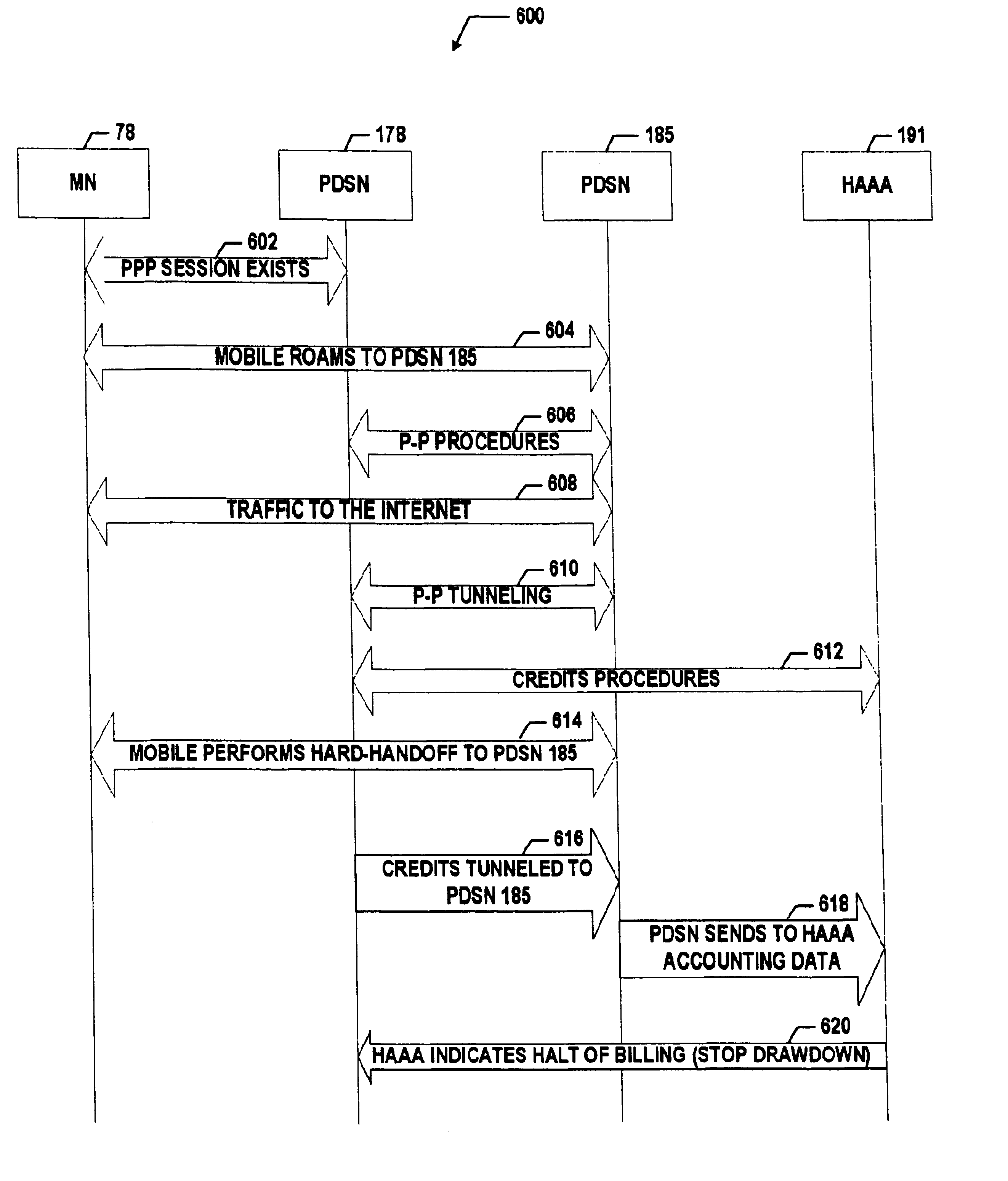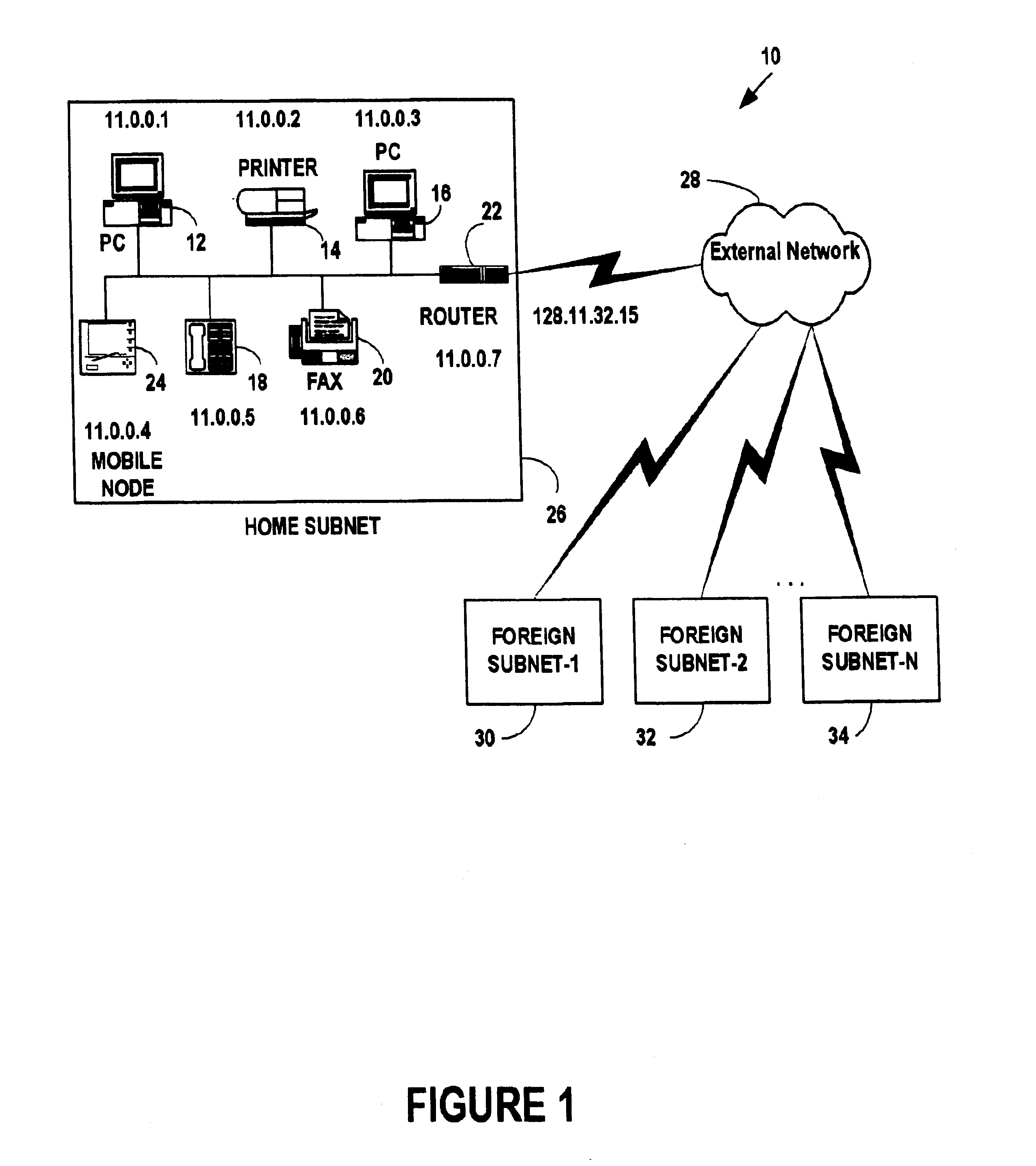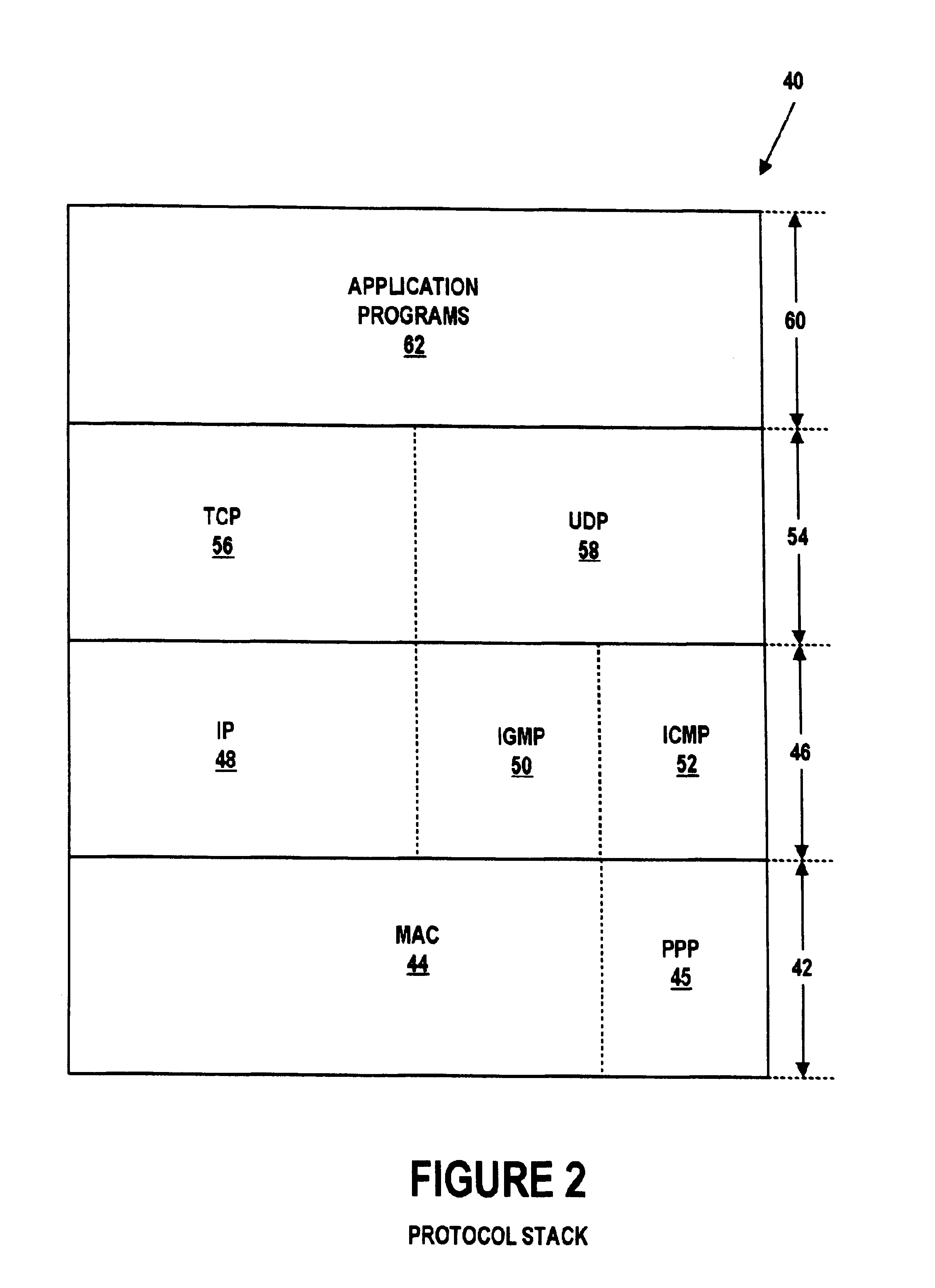Roaming and hand-off support for prepaid billing for wireless data networks
a wireless data network and prepaid billing technology, applied in the field of roaming and handing off support for prepaid billing of wireless data networks, can solve the problems of limiting the type slow video and data transmission, and current 2.5g networks with similar limitations on the types of multimedia, video and data services that can be used
- Summary
- Abstract
- Description
- Claims
- Application Information
AI Technical Summary
Benefits of technology
Problems solved by technology
Method used
Image
Examples
Embodiment Construction
1. Exemplary Architecture for Prepaid Billing
FIG. 1 is a block diagram illustrating an exemplary network system 10 in accordance with an exemplary embodiment. The network system 10 includes one or more local network devices 12, 14, 16, 18, 20, 22, 24. More or fewer local network devices can also be used. Each of the local network devices may be assigned network addresses (e.g., 11.0.0.x) on a local subnet 26. The local subnet 26 includes, but is not limited to, a wireless network, a wired network, a wireless or wired LAN, an optical network or a cable network. However, other computer networks can also be used.
The local subnet 26 is connected to an external network 28, such as the Internet or an intranet, via gateway router 22. The gateway router 22 may connect local subnet 26 to other computer networks using different networking protocols or operating at different transmission capacities. The gateway router 22 may also translate the data of a communication session between differing ...
PUM
 Login to View More
Login to View More Abstract
Description
Claims
Application Information
 Login to View More
Login to View More - R&D
- Intellectual Property
- Life Sciences
- Materials
- Tech Scout
- Unparalleled Data Quality
- Higher Quality Content
- 60% Fewer Hallucinations
Browse by: Latest US Patents, China's latest patents, Technical Efficacy Thesaurus, Application Domain, Technology Topic, Popular Technical Reports.
© 2025 PatSnap. All rights reserved.Legal|Privacy policy|Modern Slavery Act Transparency Statement|Sitemap|About US| Contact US: help@patsnap.com



